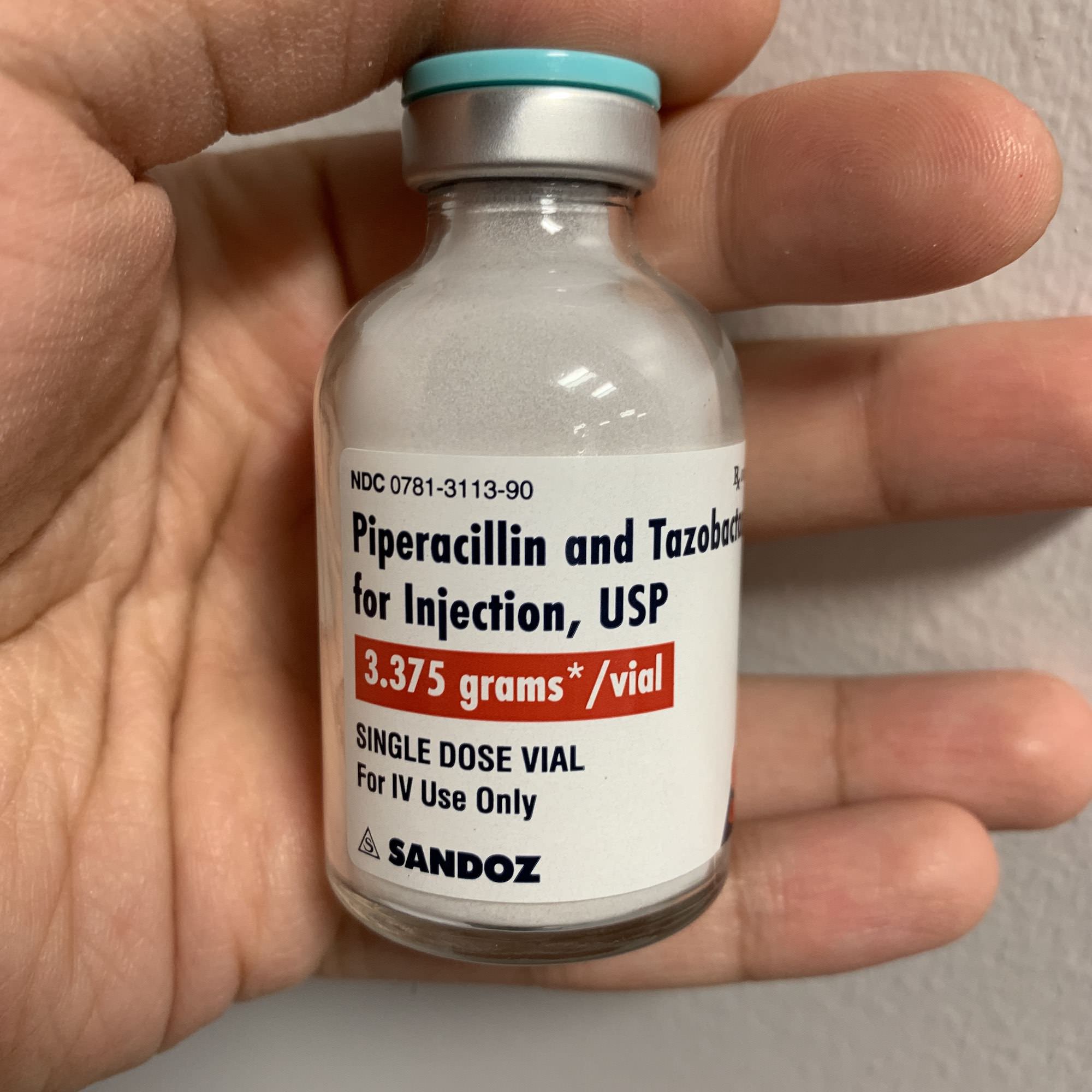Zosyn (pipercillin-tazobactam or “pip-tazo”) is an intravenous combination of a β-lactam antibiotic with a β-lactamase inhibitor. β-lactamase is an enzyme implicated in antibiotic resistance that breaks down penicillins, cephalosporins, etc., so inhibiting it may make the antibiotic more efficacious in settings where it would be rendered inactive. Zosyn has gram positive/negative (including Pseudomonas) and anaerobic coverage. As an intensivist, I use it to treat hospital acquired pneumonia, intra-abdominal infections, severe soft tissue infections, and to broadly cover patients presenting in septic shock.
To keep Zosyn’s unbound plasma concentration at a bactericidal concentration (ie, maximizing the time above the MIC), many institutions have started extended-infusions (~ 4 hours). Data suggests that these longer infusions translate to a mortality benefit in the sickest patients and in comparison to the intermittent dosing of other β-lactams (the RECEIPT review).
The combination of Zosyn and vancomycin is used often as a “carpet bombing” strategy for broad spectrum coverage coverage; however, this combo will not cover atypical infections (ie, things that cause basic community acquired pneumonia like Mycoplasma), vancomycin resistant enterococci (VRE), bacteria with extended spectrum β-lactamases (ESBL), fungi, viruses, parasites, and STENO (Stenotrophomonas maltophilia – a frequent respiratory colonizer in ICU patients but difficult-to-eliminate when clinical infection is suspected).
Drop me a comment below with questions! 🙂







Hi. I work on a med/surg/tele floor of a hospital in southern CA and Zosyn is maybe the most frequently given antibiotic on my unit. The standard for us is the four-hour infusion Q8 hours, which until today I was not aware was considered an extended dosing rate. As you may well imagine (or not since you work in critical care), IV antibiotics running at 12.5 mL/H is not optimal for patients at this acuity level. What are your thoughts? Do you see this where you work? Thanks in advance.
I can’t say I’ve seen this – dosing rates are fairly different in the OR and ICU, but I don’t actually know the rate my nursing colleagues use in the ICU.